Water sports are becoming increasingly popular with activities such as paddle boarding, diving, and open water swimming finding higher participation rates than ever before.
And with such sports, having the right gear can make all the difference, especially in cold water where it’s essential that the body is able to maintain a certain temperature. And that’s where wetsuits come into play.
That said, choosing the best cold water wetsuit can be a challenge, which is why this guide covers the key features to look out for when selecting a wetsuit, as well as which wetsuits are the most popular among consumers today.
So read on to ensure you are stocking cold water wetsuits that your buyers will love!
Table of Contents
Global market value of wetsuits
Features to consider when choosing cold water wetsuits
The best cold water wetsuits
Conclusion
Global market value of wetsuits
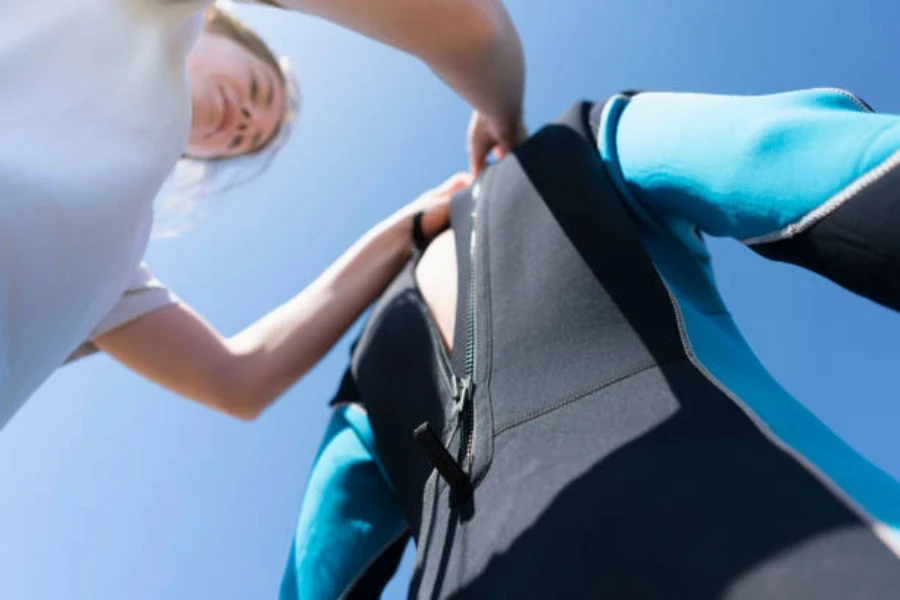
Consumers who take part in water based sports will more likely than not have a neoprene wetsuit on hand. Wetsuits are designed to protect the body from aquatic environments and in extreme cases to ensure that the body’s overall temperature stays at an optimum level. Water sports have grown in popularity recently as more consumers look to spend their leisure time taking part in sports or relaxing water activities such as paddle boarding.
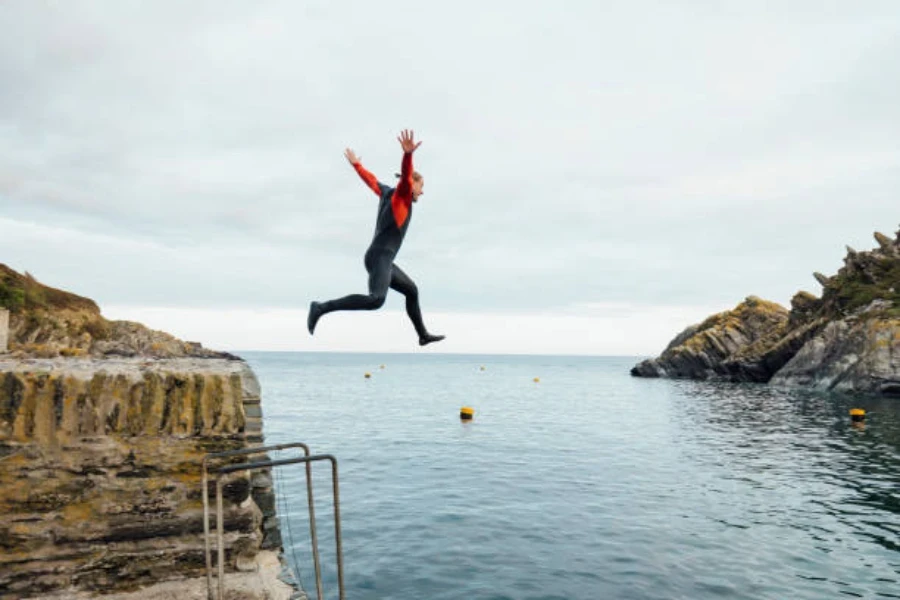
By 2022 the global market value of wetsuits reached USD 1.37 billion and that number is expected to grow at a compound annual growth rate (CAGR) of at least 5.8% between 2023 and 2030. New advancements in technology have helped to make wetsuits more attractive to consumers who require wetsuits for specific activities which has helped spur the growth of the wetsuits industry. Water sports are also being broadcast on television more frequently around the globe which has also helped to attract more buyers who want to have the correct gear.
Features to consider when choosing cold water wetsuits
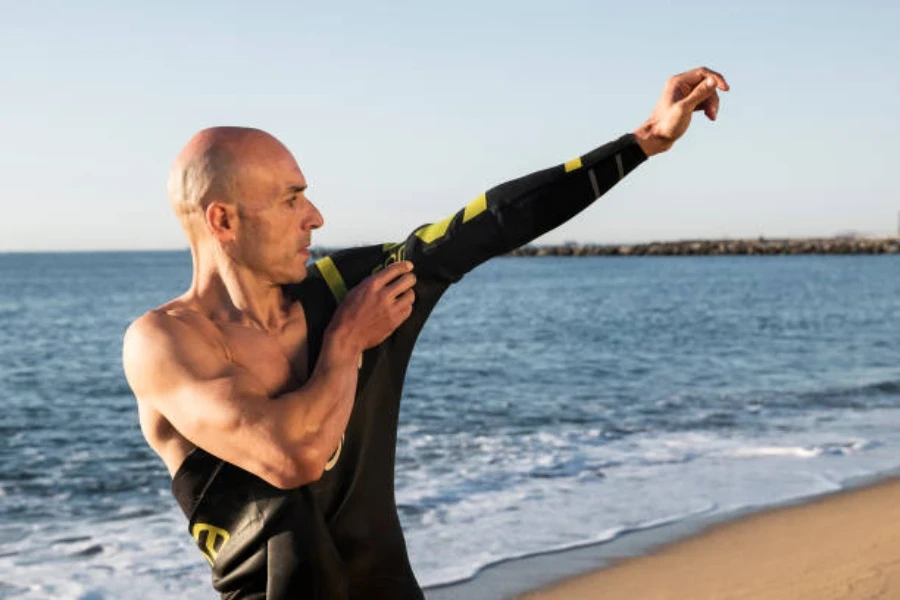
Cold water wetsuits differ from regular wetsuits in a number of ways but the goal remains the same – to protect the wearer and help maintain body temperature. Wetsuits are designed to fit as tight as possible without restricting movement and this is even more important in cold water. Here are some key features that consumers will be looking at before purchasing a cold water wetsuit:
Thickness
The thickness of a wetsuit depends on the temperature of the water that it will be worn in. A thicker wetsuit is designed for colder water but can limit movement (usually 4.5mm or above) whereas thinner wetsuits are for warmer water and can be easier to maneuver in (under 4mm).
Seams
Glued and blind stitched (GBS) is the best option for cold water as they are more durable and reduce the amount of water let into the wetsuit. Other seams include sealed and flatlock but these are more for warmer waters. The wrist and ankle cuffs are also important to point out as they should be snug enough to prevent water from entering the suit.
Material
Cold water wetsuits are designed using neoprene which is a very high-quality and flexible material that allows for maneuverability without compromising on the level of warmth provided. Consumers who want a thinner neoprene but still want to stay warm may look at Yamamoto neoprene, made from raw materials, as an alternative.
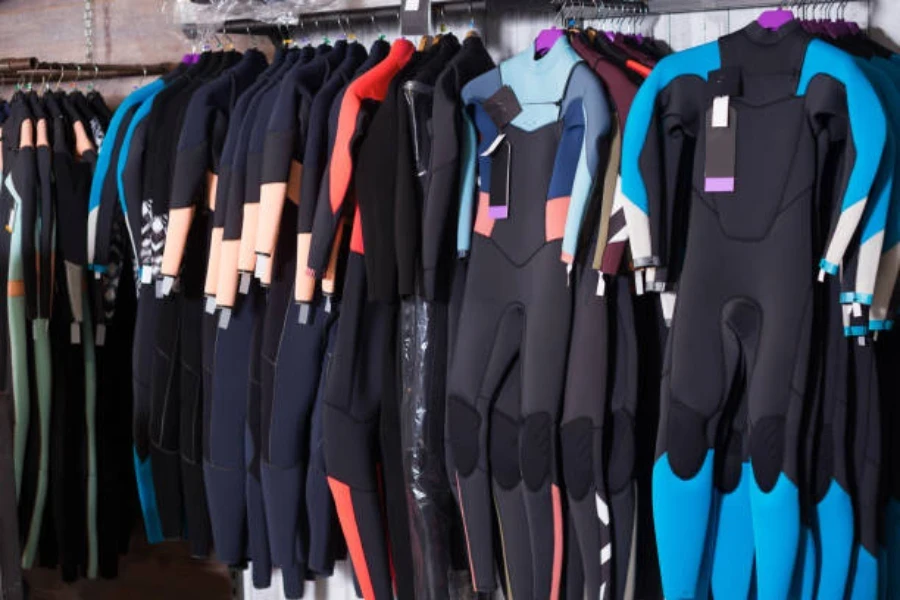
Zipper
Back zippers are the most commonly found zippers on wetsuits as it makes them easy to get in and out of and doesn’t affect water entry in a negative way. Some wetsuits are designed with chest zippers which some consumers find provides better mobility overall.
Sizing
Cold water wetsuits are designed with comfort in mind so it’s important to get the sizing right. All wetsuits should fit snug against the body without causing too much compression and discomfort. Companies will usually release a sizing chart to assist consumers in choosing the right size.
The best cold water wetsuits
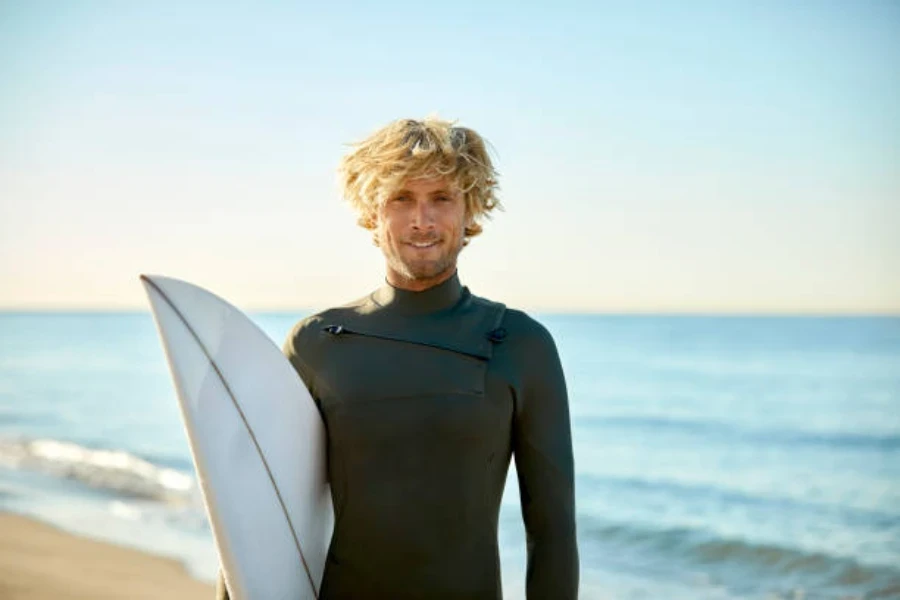
Cold water wetsuits are vital for consumers who are taking part in open water swimming activities or sports that take place in cold waters. As demand for wetsuits continues to increase, new technologies have been integrated into wetsuits to make them more appealing and specific to certain activities.
According to Google Ads, “cold water wetsuits” has an average monthly search volume of 1300 searches. The most searches come in August at 1900 searches and in the past 6 months, between April and October 2023, searches remain steady at 1300 searches each month.
When looking more specifically at the types of cold water wetsuits consumers are researching the most, Google Ads shows that “drysuit” has 40500 average monthly searches followed by “hooded wetsuit” at 3600 searches, “sleeveless wetsuit” at 1600 searches, “semi dry wetsuit” at 1000 searches, and “full body wetsuit” at 880 searches. This shows that consumers are looking for wetsuits that can provide them with the most warmth. Keep reading to learn more about each cold water wetsuit.
Drysuit
The drysuit isn’t the standard neoprene wetsuit that many people associate with watersports but it’s popularity is undeniable. Drysuits are designed to provide complete protection from the water which is what makes them the perfect option for extreme cold water conditions – even in the wintertime. They’re usually made of a very thick neoprene or Gore-Tex material with specialized seals that help to create a waterproof barrier in areas that water normally gets into. Drysuits will commonly have a front entry system which is easier to enter and the seams are completely sealed rather than stitched.
What’s unique about the drysuit is that it’s worn over clothing rather than in place of them. This adds to the insulation of the drysuit to create a warm barrier in freezing conditions. It’s also common for drysuits to include boots with good traction as well as a hood for additional protection from the elements. They should fit snug but not as tight as other wetsuits to allow for movement and clothing to be worn underneath.
Google Ads shows that over a 6 month period, between April and October 2023, searches for “drysuit” remain steady at 40500 searches each month. It’s most searched for in November with 49500 searches.
Hooded wetsuit
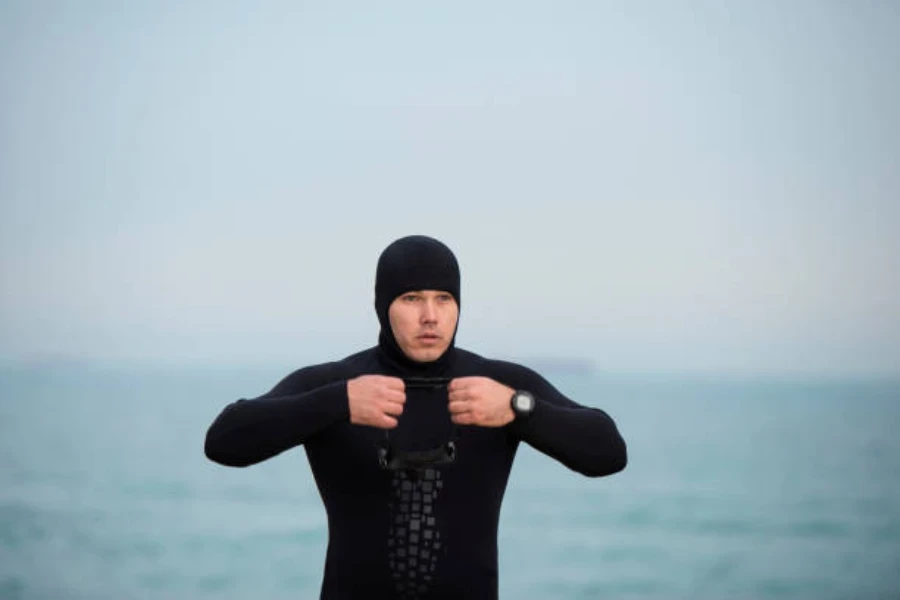
Hooded wetsuits are a popular option among consumers who want extra warmth around the head. In very cold waters and during activities such as diving or open water swimming this is essential in helping to maintain the proper body temperature. The thickness of the neoprene on the hooded wetsuit will depend on the temperature of the water and the seams will be glued and blind stitched with the watertight wrist and ankle seals ensuring water doesn’t enter the suit.
The difference with this cold water wetsuit is the hood. The design of the hood needs to cover the back of the neck as well as the entirety of the head and should be well-fitted in the same way that the rest of the wetsuit is.
Google Ads shows that over a 6 month period, between April and October 2023, searches for “hooded wetsuit” remain steady at 2900 searches each month. It’s most searched for in December and January with 4400 searches.
Sleeveless wetsuit
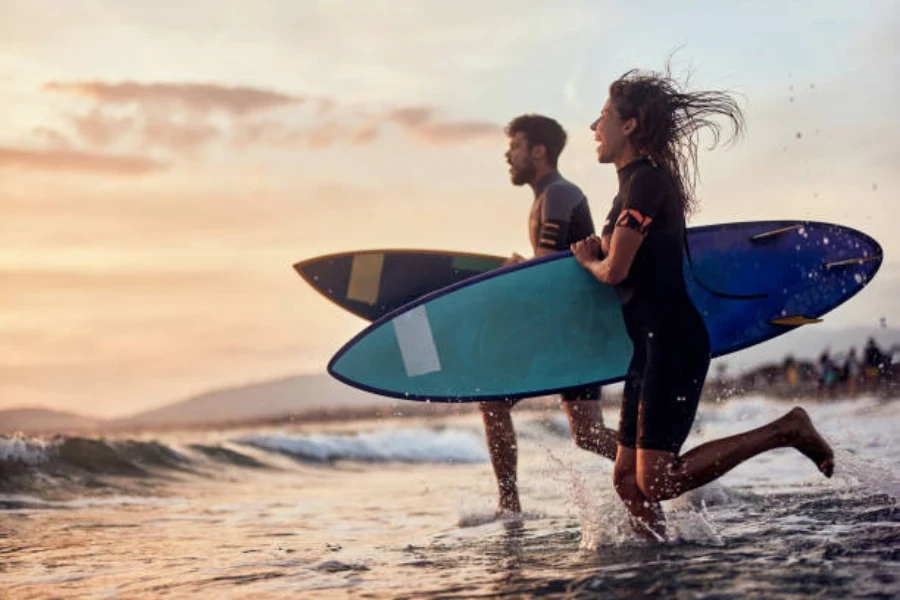
The sleeveless wetsuit isn’t suitable for extreme cold water but it’s one of the best cold water wetsuits for consumers who require a lot of mobility with their arms. These wetsuits are sometimes referred to as “farmer John/Jane” wetsuits and are the perfect option for surfers who need more flexibility than regular wetsuits provide.
The short or no sleeve design means that the arms are outside of the wetsuit but the legs and body are fully or partially covered by the neoprene which helps to provide insulation for the lower body.
Google Ads shows that over a 6 month period, between April and October 2023, searches for “sleeveless wetsuit” remain steady at 1300 searches each month. It’s most searched for in July with 1900 searches.
Semi dry wetsuit
For consumers who aren’t spending a lot of time in cold water or aren’t planning on going into extreme cold water conditions the semi dry wetsuit is a more budget friendly option. It consists of all of the same features as other neoprene wetsuits such as wrist and ankle seals, back or front zippers for entry, and various thickness levels.
Semi dry wetsuits won’t, however, keep all of the water out. They’re designed to provide additional warmth in cold water and reduce the amount of water that’s allowed inside but they aren’t a drysuit. To ensure that too much warmth isn’t allowed to escape, the semi dry suit needs to fit tightly against the body.
Google Ads shows that over a 6 month period, between April and October 2023, searches for “semi dry wetsuit” remain steady at 1000 searches each month. It’s most searched for in February, July, and November with 1300 searches.
Full body wetsuit
Full body wetsuits are quite similar to semi dry wetsuits as both are meant to help the wearer maintain their body temperature in cold water. Oftentime full body wetsuits will incorporate a hood into the design to help protect the neck area as well as the head from cold water. The wrist and ankle seals are not completely watertight though and will allow some degree of water to flow in and out of the suit. For this reason it’s not advised that consumers use the full body wetsuit in extreme cold water conditions.
Google Ads shows that over a 6 month period, between April and October 2023, searches for “full body wetsuit” remain steady at 880 searches each month. It’s most searched for in August with 1300 searches.
Conclusion
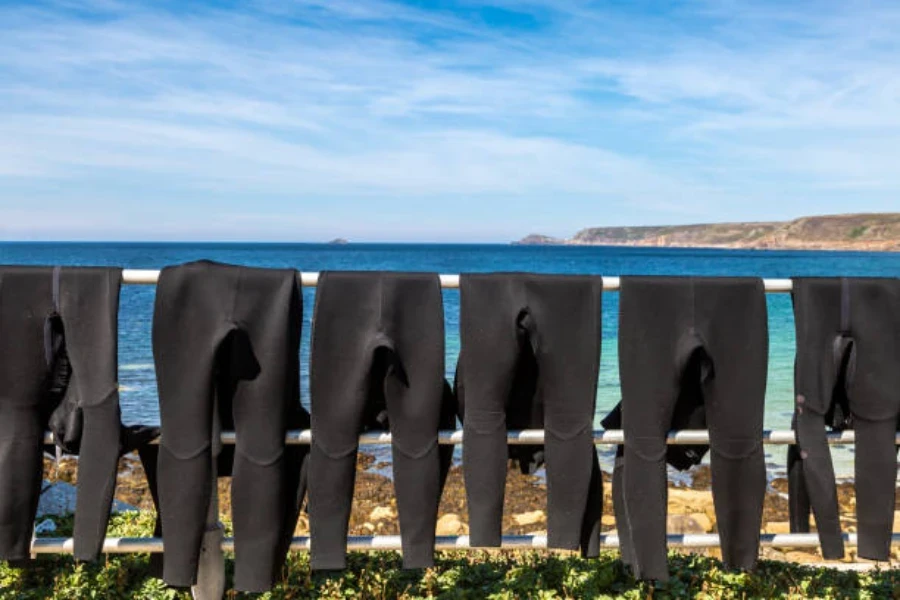
Choosing the best cold water wetsuit depends on a number of factors such as the temperature of the water, the activity the wearer will be participating in, the type of seals that are used, and the thickness of the neoprene that’s needed. The most important thing to remember however is that consumers will want a cold water wetsuit that not only provides insulation and comfort but that also allows them the flexibility to move when necessary.




